Nose
Our noses facilitate breathing by helping to keep out potentially harmful dirt, allergens, and other agents. In addition to allergies, ENT specialists treat deviated septum, rhinitis, sinusitis, sinus headaches and migraines, nasal obstruction and surgery, and more.
Dr. Spencer C. Payne – Board Certified Otolaryngologist
Nose Conditions
Asthma
Asthma is a very common condition of the lungs where the passages within the lungs can become narrow and cause noisy breathing and shortness of breath.
Bronchitis
Bronchitis is a condition when the bronchi, the passages that carry air from the windpipe to and from the lungs, become inflamed.
Deviated Septum
It is estimated that as many as 80 percent of people have a nasal septum that is off-center. This is called a deviated septum, which may or may not cause certain symptoms.
Dysgeusia
Dysgeusia is a condition where a person’s perception of taste is altered; everything seems sweet, sour, bitter, or metallic.
Fungal Sinusitis
Fungal sinusitis is a broad term used to describe various situations when fungus might be involved in the cause or symptoms of nasal and sinus inflammation.
Geriatric Rhinitis
Rhinitis is an inflammation of the mucous lining of the nasal cavity. Geriatric rhinitis is a common but often neglected or overlooked condition.
Hyposmia and Anosmia
Hyposmia is a decreased sense of smell, or a decreased ability to detect odors through your nose. Anosmia is the inability to smell anything.
Nosebleeds
Nosebleeds (called epistaxis) are caused when tiny blood vessels in the nose break.
Post-nasal Drip
Mucus is normally swallowed unconsciously, but when there is a feeling of the mucus gathering in the throat or dripping from the back of your nose, it is called post-nasal drip.
Rhinitis
Rhinitis is a condition that typically involves nasal obstruction or congestion, runny nose or post-nasal drip, itchy nose, and/or sneezing.
Sinus Headaches
Not every headache is the result of sinus and nasal passage problems.
Sinusitis
Sinusitis, also called rhinosinusitis because the symptoms involve both the nose and the sinuses, affects about one in eight adults annually.
Turbinate Hypertrophy
Turbinate hypertrophy refers to an excessive growth or enlargement of the turbinates, which are bony structures located inside the nose.
Spotlight
Sinus headaches is a common term used by patients and some healthcare providers to describe pain or pressure in the face, over the forehead, or between or behind the eyes.
Sinusitis, also called rhinosinusitis because the symptoms involve both the nose and the sinuses, affects about one in eight adults annually.
Rhinitis is a condition that typically involves nasal obstruction or congestion, runny nose or post-nasal drip, itchy nose, and/or sneezing.
Get the Care You Need
Find an ENT
Think you need to consult an ENT specialist? Find someone with the expertise and location that’s best for your needs.
Be ENT Smart
Learn how to stay ENT healthy, prevent problems, and manage existing conditions to improve your, or a loved one’s, daily life.
About ENThealth.org
Find out more about the community of physician experts who can help you to Be ENT Smart and how the information was developed.
Copyright 2025. American Academy of Otolaryngology–Head and Neck Surgery Foundation




